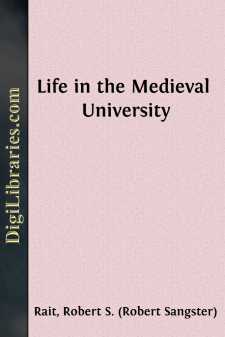Categories
- Antiques & Collectibles 13
- Architecture 36
- Art 48
- Bibles 22
- Biography & Autobiography 813
- Body, Mind & Spirit 138
- Business & Economics 28
- Children's Books 12
- Children's Fiction 9
- Computers 4
- Cooking 94
- Crafts & Hobbies 4
- Drama 346
- Education 46
- Family & Relationships 57
- Fiction 11821
- Games 19
- Gardening 17
- Health & Fitness 34
- History 1377
- House & Home 1
- Humor 147
- Juvenile Fiction 1873
- Juvenile Nonfiction 202
- Language Arts & Disciplines 88
- Law 16
- Literary Collections 686
- Literary Criticism 179
- Mathematics 13
- Medical 41
- Music 40
- Nature 179
- Non-Classifiable 1768
- Performing Arts 7
- Periodicals 1453
- Philosophy 64
- Photography 2
- Poetry 896
- Political Science 203
- Psychology 42
- Reference 154
- Religion 505
- Science 126
- Self-Help 81
- Social Science 81
- Sports & Recreation 34
- Study Aids 3
- Technology & Engineering 59
- Transportation 23
- Travel 463
- True Crime 29
An Outline of the Relations between England and Scotland (500-1707)
Categories:
Description:
Excerpt
INTRODUCTION
The present volume has been published with two main objects. The writer has attempted to exhibit, in outline, the leading features of the international history of the two countries which, in 1707, became the United Kingdom. Relations with England form a large part, and the heroic part, of Scottish history, relations with Scotland a very much smaller part of English history. The result has been that in histories of England references to Anglo-Scottish relations are occasional and spasmodic, while students of Scottish history have occasionally forgotten that, in regard to her southern neighbour, the attitude of Scotland was not always on the heroic scale. Scotland appears on the horizon of English history only during well-defined epochs, leaving no trace of its existence in the intervals between these. It may be that the space given to Scotland in the ordinary histories of England is proportional to the importance of Scottish affairs, on the whole; but the importance assigned to Anglo-Scottish relations in the fourteenth century is quite disproportionate to the treatment of the same subject in the fifteenth century. Readers even of Mr. Green's famous book, may learn with surprise from Mr. Lang or Mr. Hume Brown the part played by the Scots in the loss of the English dominions in France, or may fail to understand the references to Scotland in the diplomatic correspondence of the sixteenth century. There seems to be, therefore, room for a connected narrative of the attitude of the two countries towards each other, for only thus is it possible to provide the data requisite for a fair appreciation of the policy of Edward I and Henry VIII, or of Elizabeth and James I. Such a narrative is here presented, in outline, and the writer has tried, as far as might be, to eliminate from his work the element of national prejudice.
The book has also another aim. The relations between England and Scotland have not been a purely political connexion. The peoples have, from an early date, been, to some extent, intermingled, and this mixture of blood renders necessary some account of the racial relationship. It has been a favourite theme of the English historians of the nineteenth century that the portions of Scotland where the Gaelic tongue has ceased to be spoken are not really Scottish, but English. "The Scots who resisted Edward", wrote Mr. Freeman, "were the English of Lothian. The true Scots, out of hatred to the 'Saxons' nearest to them, leagued with the 'Saxons' farther off." Mr. Green, writing of the time of Edward I, says: "The farmer of Fife or the Lowlands, and the artisan of the towns, remained stout-hearted Northumbrian Englishmen", and he adds that "The coast districts north of the Tay were inhabited by a population of the same blood as that of the Lowlands". The theory has been, at all events verbally, accepted by Mr. Lang, who describes the history of Scotland as "the record of the long resistance of the English of Scotland to England, of the long resistance of the Celts of Scotland to the English of Scotland". Above all, the conception has been firmly planted in the imagination by the poet of the Lady of the Lake.
"These fertile plains, that soften'd vale,
Were once the birthright of the Gael;
The stranger came with iron hand,
And from our fathers reft the land."
While holding in profound respect these illustrious names, the writer ventures to ask for a modification of this verdict. That the Scottish Lowlanders (among whom we include the inhabitants of the coast districts from the Tay to the Moray Firth) were, in the end of the thirteenth century, "English in speech and manners" (as Mr. Oman guardedly describes them) is beyond doubt. Were they also English in blood? The evidence upon which the accepted theory is founded is twofold. In the course of the sixth century the Angles made a descent between the Humber and the Forth, and that district became part of the English kingdom of Northumbria. Even here we have, in the evidence of the place-names, some reasons for believing that a proportion of the original Brythonic population may have survived. This northern portion of the kingdom of Northumbria was affected by the Danish invasions, but it remained an Anglian kingdom till its conquest, in the beginning of the eleventh century, by the Celtic king, Malcolm II....



